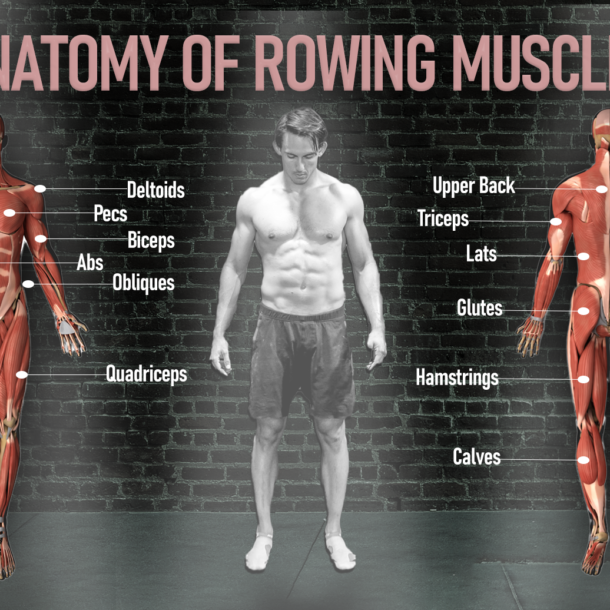
How Many Rest Days A Week?
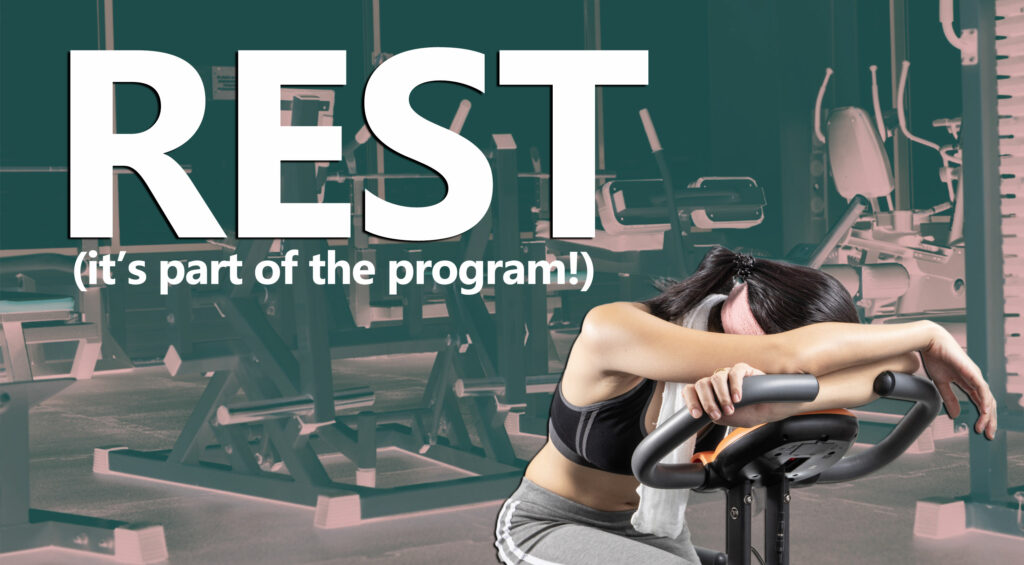
Your rest days are just as important as your training day. I need to listen to this advice also!
There are multiple strategies, including massage, stretching and hot/cold therapy, which all help your body recover but to heal and recover fully takes a proper rest day schedule.
Here is the Dark Horse guide to rest and how many days a week you should get.
WHY REST?
Once you’re exercising regularly, taking a rest day without guilt can be quite challenging. Like you, I hate missing workouts and feeling like I’m falling behind or not maximizing my time!
Over Training Syndrome (OTS) and exercise addiction are legitimate issues. One study on OTS concludes how important it is to help people understand the benefits that rest days bring with this quote:
“The most paramount warning sign athletes should be educated about is the caution one should employ when decreasing performances are met with increased efforts without a return to better performance.“
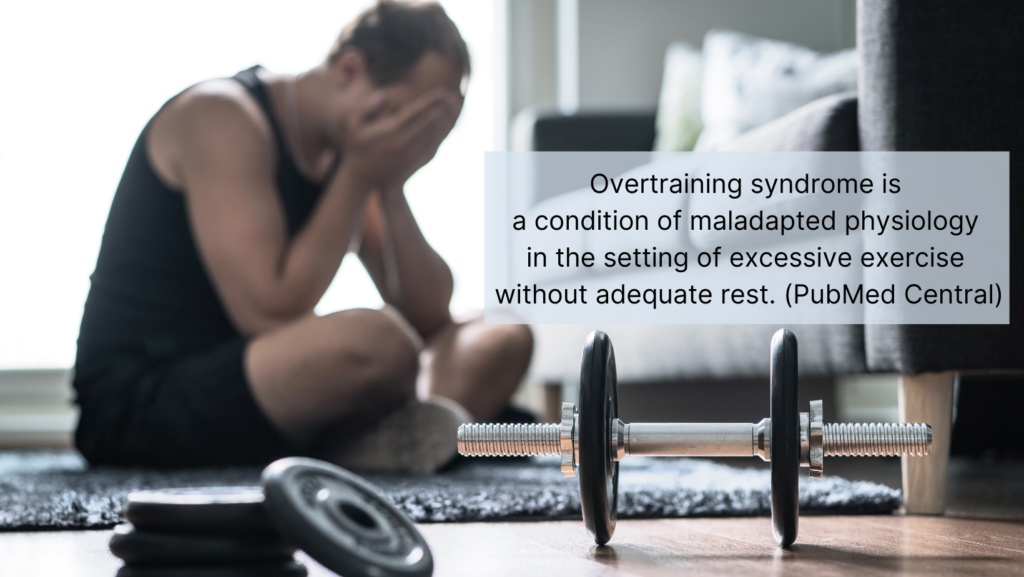
While there is no hard and fast rule, there is a lot of general guidance around rest days and how to optimize your recovery. So let’s delve into rest days based on where you are at in your fitness journey.
HOW MANY REST DAYS FOR BEGINNERS?
If you are new to training regularly, you’ll want to schedule your training and get 2-3 days of rest per week.
Your “training” here will be a lot of drills and skill development, but that doesn’t mean you won’t experience a bit of muscle soreness with the workouts you do, and working out while sore is truly unhelpful and unenjoyable.
Once you reach the 6-week mark, reassess where you’re at and perhaps decrease the number of rest days.
Here’s a very young Shane explaining why two hard workouts per week are perfect if you are at this point in your journey with rowing.

HOW MANY REST DAYS ROWING ONLY TRAINING?
Rowing only training regularly can create a lot of other aches and pains that aren’t muscle related, so the stress on the joints and surrounding tendons and ligaments is what you are looking at resting her
Again you’ll want a solid to take 2-3 days of rest per week. However, this is where those additional recovery strategies also need to come into play. I’m a massive fan of hot/cold therapy. Exposure to the two temperature extremes significantly benefits your body’s connective tissue.
You can also opt for active rest days instead of doing nothing; swimming, yoga, weight training or simple stretching are all good options. *Note make sure they are done at low volume and intensity, I’ve overdone these in the past and added more time to my rest unintentionally.
On the flip side, if you can’t stay off the machine, you could opt for a very light workout that’s skill-based and works on those mechanics.
This Back to Basics Rowing Machine Workout is one of the go-to workouts I frequently use when increasing the volume of erg training.
HOW MANY REST DAYS BETWEEN HIIT WORKOUTS?
HIIT stands for high-intensity interval training. It’s a hugely popular type of workout, with row-only and mixed modality workouts.
As a great way to drive weight loss and help lower visceral fat, it’s also great to get those endorphins flowing, which is why people love it.
If you are at the point in your journey where these are your go-to sessions, then we know you are serious about your training, so rest should equally be as serious.
It’s advised that you get 3-4 days rest from your HIIT training, but that means your schedule will have time for resistance training or a gentler workout on subsequent days. So listen to your body and avoid those early signs of OTS as much as possible.
HOW MANY REST DAYS BEFORE AN EVENT?
Whether you’re training for a sprint, a marathon, or a team event, you must manage your training schedule carefully in the run-up to any competition.
Ideally, you want to start tapering down on your training between 10 and 14 days before your event. Slowly decrease your training volume in the run-up to the event, with the primary aim in these weeks to keep things moving and ticking over nicely.
Your training at this stage is about staying fit and healthy – you’ll already have done the hard grafting to lift your performance level.
You aim to be training at about 30% of normal three days before your event. This tapering will reduce your chance of injury just before your race (nobody wants that) and help prepare your body to perform at the highest possible level on the day.
SUMMARY
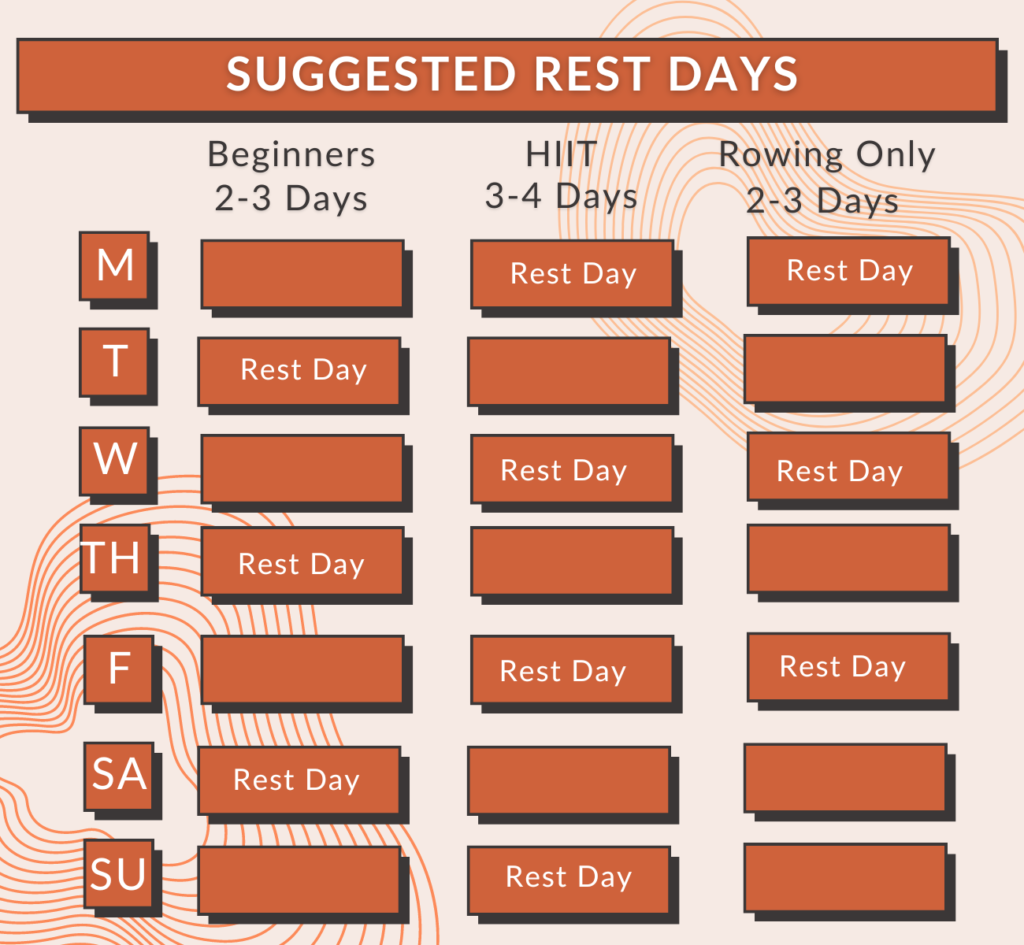
Generally speaking, 2-3 rest days a week is optimum for everyone.
Factors such as age, your training age and goals will vary this number, but sticking to this advice will help reduce the chance of injury, help you recover adequately and help support long-term gains.
It will also help ensure you avoid OTS, which is vital for mental and physical health. So if you have questions on rest, join us in The CREW and talk to our coaches about strategies they employ and talk to others in the same position as you.
Awesome! We’d love for you to join our newsletter! 😄
https://darkhorserowing.activehosted.com/f/12


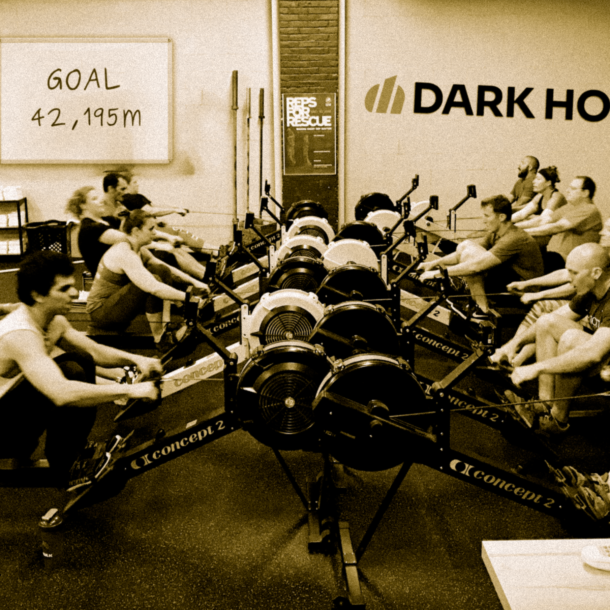
4 Comments
Hello, I just started your 20 minute beginner rowing workout on youtube, and a lot of what you said during the video really hit home and made a lot of sense, and inspired me, so I plan on continuing your videos. I also want to start doing a calisthenics routine, but I’m confused about how to juggle the two, as both would require 2-3 rest days per week. For reference, the calisthenics routine is the RR on the r/bodyweightfitness subreddit.
I was thinking about doing the calisthenics routine and doing lighter rowing sessions on my rest days. Does this seem like a decent plan? Do you have any suggestions on how to incorporate the two routines?
Hi Andy! Alternating your calisthenics routine and rowing sessions on your rest days sounds like a good plan. We advise our members in The Crew
to do the same for their other workouts (running, cycling, etc) You can email us at [email protected] for more info.